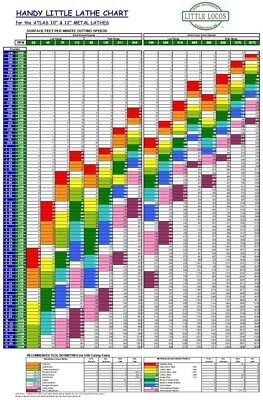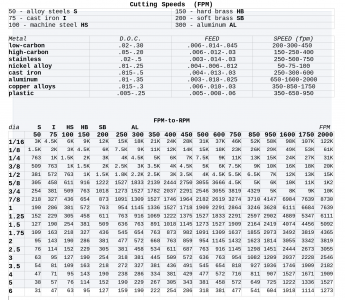- Joined
- Oct 4, 2016
- Messages
- 7,021
This person has charts for wall mounting depending on lathe size.


WALL CHART for 10in 12in ATLAS METAL LATHE - CRAFTSMAN - 16 Speed | eBay
Each is FULL-SEAL HOT LAMINATED with heavy duty (5-mil) FILM. The chart is totally sealed for years of use and wipes clean with a soft cloth. Using one chart, you can easily find the correct tool cutting angles and the proper cutting speeds for any of 22 different materials.
www.ebay.com


